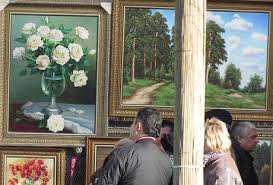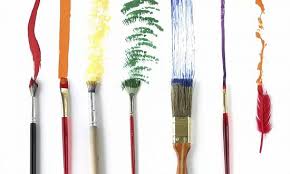artist’s inspiration
VLADIMIR SCHOOL SCHOOL SCHOOL (part 2)
 By the 1970s, the recognizable style of painting, common to all representatives of the Vladimir school, was finally formed. The landscape space in them, as a rule, is reduced to a plane. The plans are brought together, the composition is extremely simple, the horizon line in the paintings is deliberately overestimated. This set of techniques gives reason to talk about the closeness of their aesthetics with the stylistic principles of Rostov-Suzdal icon painting … The letter in Vladimir painting is temperamental, the texture is particularly striking. A completely unique find of Vladimirites is the use of experimental bulk soils that enhance the decorative effect of textured writing. Bright, pasty painting on the textured soil, different heights of the colorful relief in the picture increased the living trepidation of the depicted, enhanced the contrast of the color scheme. Continue reading
By the 1970s, the recognizable style of painting, common to all representatives of the Vladimir school, was finally formed. The landscape space in them, as a rule, is reduced to a plane. The plans are brought together, the composition is extremely simple, the horizon line in the paintings is deliberately overestimated. This set of techniques gives reason to talk about the closeness of their aesthetics with the stylistic principles of Rostov-Suzdal icon painting … The letter in Vladimir painting is temperamental, the texture is particularly striking. A completely unique find of Vladimirites is the use of experimental bulk soils that enhance the decorative effect of textured writing. Bright, pasty painting on the textured soil, different heights of the colorful relief in the picture increased the living trepidation of the depicted, enhanced the contrast of the color scheme. Continue reading
HISTORY OF LANDSCAPE GENRE DEVELOPMENT (part 1)
 Translated from French, the word “landscape” (paysage) means “nature”. This is what the genre is called in fine art, the main task of which is the reproduction of natural or human-modified nature.
Translated from French, the word “landscape” (paysage) means “nature”. This is what the genre is called in fine art, the main task of which is the reproduction of natural or human-modified nature.
In addition, the landscape is a specific work of art in painting or graphics, showing the viewer nature. The “hero” of such a work is a natural motif or a natural motif invented by the author.
Elements of the landscape can be found already in cave art. In the Neolithic era, primitive masters schematically depicted rivers or lakes, trees and stone blocks on the walls of caves. On the Tassilin-Ager plateau in the Sahara, drawings were found with scenes of hunting and driving herds. Continue reading
ABOUT AQUARIAN PAINTING TECHNIQUE (part 3)
 The foregoing applies to any kind of art, but it is watercolor that is particularly susceptible to temperament and the “movement of the brush” emanating from the movement of the spirit of the master. It denotes a creative, mental and philosophical attitude to the material. This is the main secret and the problem of ownership of equipment. A high concentration of energy, self-control, a clear thought, a clear task, and a subtle sense of water, colors, and paper are the qualities of a painter that are necessary for the embodiment of an image in a whimsical watercolor painting.
The foregoing applies to any kind of art, but it is watercolor that is particularly susceptible to temperament and the “movement of the brush” emanating from the movement of the spirit of the master. It denotes a creative, mental and philosophical attitude to the material. This is the main secret and the problem of ownership of equipment. A high concentration of energy, self-control, a clear thought, a clear task, and a subtle sense of water, colors, and paper are the qualities of a painter that are necessary for the embodiment of an image in a whimsical watercolor painting.
A good illustration of what has been said is a brief acquaintance with one of the traditional pictorial techniques of the East. In China and Japan, there are ancient traditions of writing with water-based materials, mostly ink painting. The traditions of the East are very different from European ones. Continue reading




